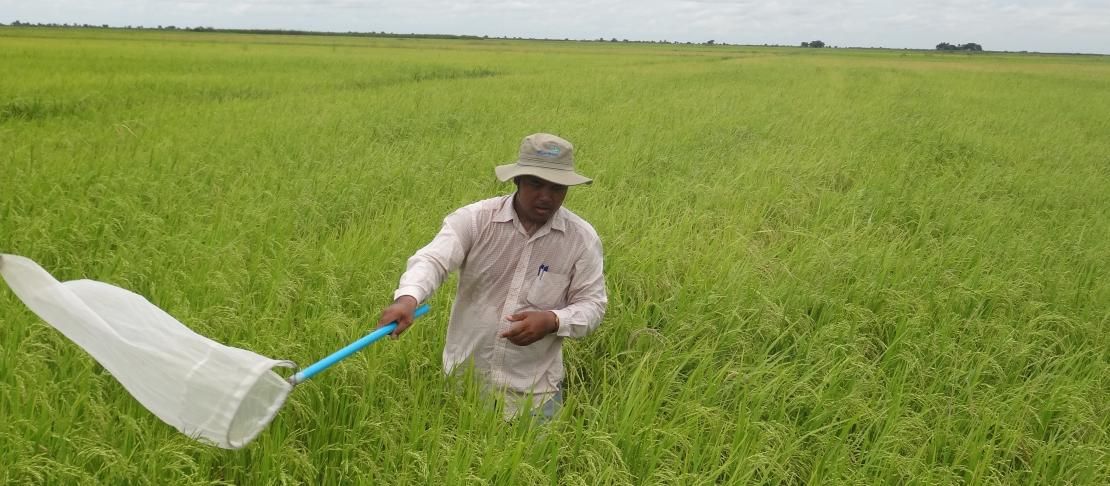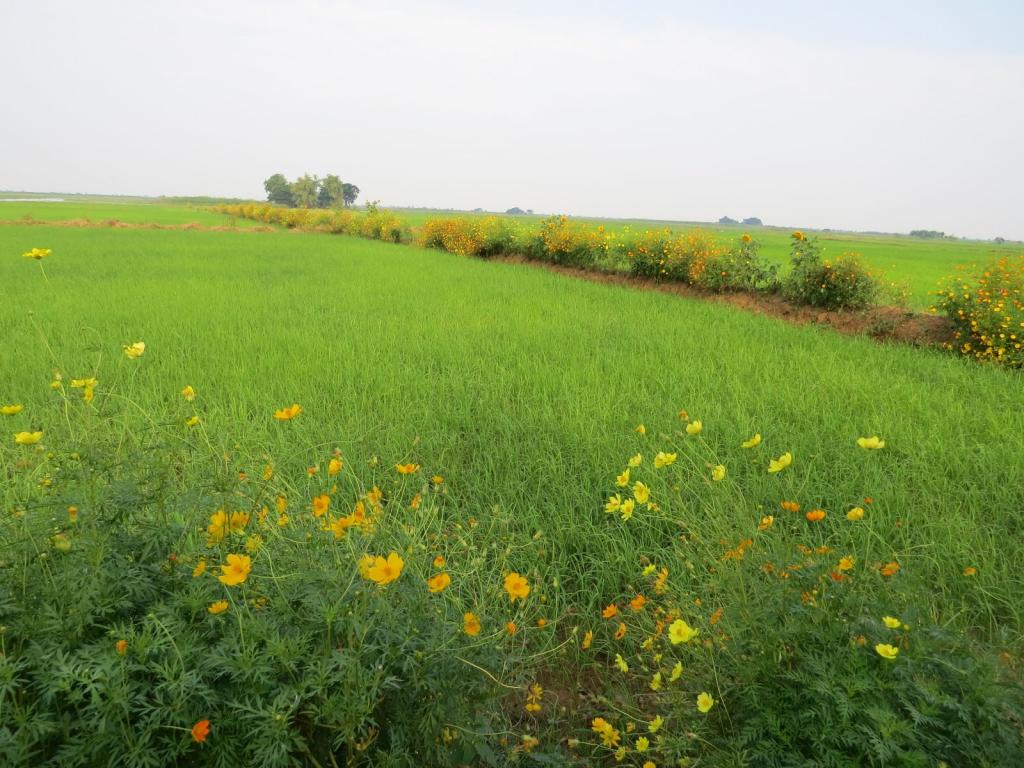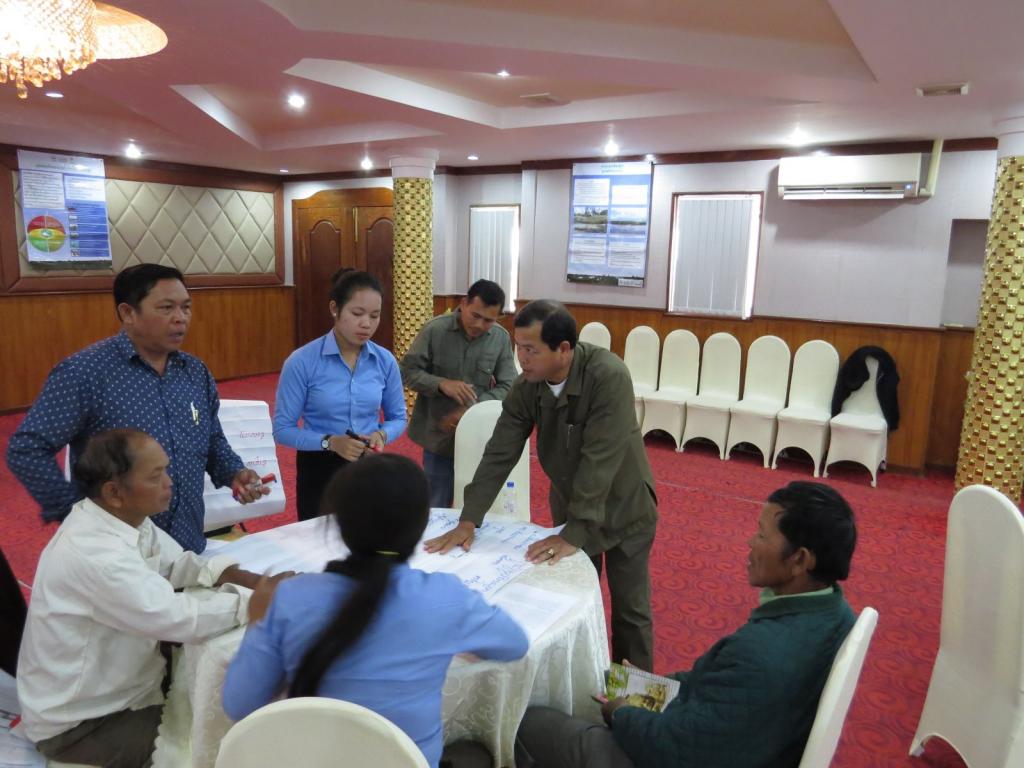Scaling ecological engineering in Cambodia

Ecological engineering is a pest-smart intervention that promotes a fresh and insecticide-free farm.
Cambodia, an agriculture-dependent country in Southeast Asia, is considered vulnerable to climate-related risks due to its limited adaptive capacities and agricultural innovations. Specifically, Cambodia is already going through changes in its weather patterns, including temperatures that are higher than usual and rains and droughts that last for longer periods than before. These changes will escalate pest cycles and eventually the spread of diseases, aggravating the current phytosanitary condition of rice crops.
As a response to the alarming spread of pests and diseases (P&D) in farms, WorldFish and the Centre for Agriculture and Biosciences International introduced ecological engineering (EE) to Rohal Suong Climate-Smart Village (CSV) in Cambodia in 2017.
Rohal Suong CSV serves as one of the demonstration sites where pest-smart practices such as EE are being introduced and tested for later adoption. The CGIAR Research Program on Climate Change, Agriculture and Food Security (CCAFS) supervises CSVs in Southeast Asia and other parts of the world.
Environmentally friendly and cost-saving
EE is a pest-smart intervention that involves planting of flowers around rice bunds to attract species that prey on insects that spread P&D on rice. EE training was provided to the CSV project team members and farmers by Dr. HV Chien, an EE specialist and the former director of Southern Regional Plant Protection Center.
After the training, three farmers were selected to pilot the EE testing plots while three more farmers were chosen to manage controlled plots, or those rice fields that practice traditional methods. Through this strategy, inputs and outputs in the EE and non-EE plots will be compared, which will then show if EE is indeed effective in addressing issues on P&D.
Cosmos flowers and sunflowers are planted around bunds of rice farms. Photo: Dyna Eam (WorldFish)
In EE plots, Cosmos sulphureus, commonly known as cosmos flowers, are planted around rice bunds to attract species that will prey on harmful insects. These plots must also be insecticide-free during the first 40 days of pilot testing.
Field monitoring was conducted to record data such as the types, amount, and cost of pesticides, as well as labor costs. Moreover, several farmers participated in the evaluation phase, wherein they patrolled both the EE and controlled plots with sweeping nets to catch harmful insects. As expected, more of the insect-preying species were found in EE plots due to the presence of cosmos flowers and the reduced application of insecticide.
A field day was organized for pilot farmers, neighboring farmers, and villager leaders to reflect on the advantages and disadvantages of implementing EE.
After the reflective exercise, more farmers were interested in EE piloting since it provides positive benefits compared to traditional approaches. Aside from promoting more environmentally friendly farms, farmers can save more money by adopting EE. For instance, farmers may be able to reduce their use of insecticides but maintain yields. This means that farmers can now allocate the money that used to be dedicated for insecticide and labor costs to other cost-saving options, or save it for their families.
Scalability potential
In Cambodia, WorldFish, in partnership with the Department of Agricultural Extension, Provincial Department of Agriculture, Fisheries and Forestry of Battambang, and Aphivat Srey, a local NGO, organized an annual reflection workshop about climate-smart agriculture (CSA). It served as a platform for CSA and non-CSA farmers, agriculture officers, village leaders, project team members, and local government officers to analyze the costs and benefits of EE.
Farmers, an agriculture officer and a villager leader analyzing the costs and benefits of EE during a CSA annual reflection workshop. Photo: Dyna Eam (WorldFish)
To further promote EE adoption, project team members and commune extension workers shared its advantages with farmers, community committees, and village leaders in CSVs and neighboring villages. Capacity building sessions were then provided to interested farmers who planned to apply EE on their farms, which included EE training, field monitoring, and knowledge sharing skills. “Our village is ready to use the cosmos flowers in a larger area, and we are enthusiastic to develop safer ways to grow rice, with less pesticide use,” said Mr. Kim Torn, one of the farmer leaders.
In 2018, more than 20 farmers are now applying EE on their farms, which account for around 20 hectares of rice fields in Rohal Suong CSV and two other neighboring villages. And decision-makers at commune and district government level are supporting CSA and encouraging their farmers to adopt and scale climate-smart techniques and practices.
Read more:
- Blog: Developing pest-smart farmers in Cambodia
- Blog: Pest Smart interventions: Paving the way to pest and disease resilient rice farms
- Blog: “Pest-smart” to climate-smart in Southeast Asia
Dyna Eam is a researcher at WorldFish Cambodia, working on the Climate-Smart Village project.





